Few things in football are more appealing to a clubs fan base than a former legend of the club returning to them in a coaching capacity. This is the coaching equivalent of a player from the youth system making his first-team debut and going on to become a regular. Perhaps the most famous of these appointments in recent memory has been Pep Guardiola at Barcelona. The Spaniard had, however, experienced a season as a coach with the Barcelona B side to get his first exposure to coaching. There are some similarities between that appointment and the decision at Chelsea to appoint their former midfield star Frank Lampard as the replacement for the outgoing Italian Maurizio Sarri.
Lampard, like Guardiola, was a world-class midfield player who spent the majority of his playing career at one club before leaving towards the end of his playing days to experience football in a new environment. Lampard has, as with Guardiola, completed a single season of first-team coaching to this point, with Derby County in the English Championship. There are still a number of questions surrounding the ability of Lampard to coach at the highest level but the attraction of the Chelsea power brokers to their former player is obvious.
In this tactical analysis, we will reflect on the tactical lessons learnt from Lampard’s first season as a coach and consider how his philosophy will be applied at Stamford Bridge.
The system
Over the course of the 2018/19 season under Frank Lampard, we saw Derby County line up in a 4-3-3 or a variant of that system for the vast majority of the time.

77% of the time last season we saw Derby playing a 4-3-3 of a sort. Only 3% of the time did we see a meaningful divergence from this approach with a back three used. From this statistical evidence, it is clear therefore that Lampard is highly likely to employ the same 4-3-3 at Chelsea. This is where the issues begin to appear over the last 4-5 seasons we have seen Chelsea appoint a series of coaches who have all had different tactical ideas. This has led to recruitment at the first-team level being largely unbalanced. There are definitely questions as to whether this Chelsea side will fit the tactical blueprint of Lampard.
We should at this point clarify the perceived success of Lampard in his season with Derby County. Many neutrals or even interested spectators will point to the presence of Derby in the playoffs after finishing in sixth position and suggest that they had a successful season. The underlying metrics, however, suggest that Derby overperformed based on expected goals and should have finished quite a few places lower in the table. It remains to be seen whether this overperformance was down to luck or coaching from Lampard and his staff.
Passive ball progression
It was evident from the early stages of the season of Derby under Lampard that the young English coach wanted his side to play out from the back. However, despite having players capable of playing progressive passes through the thirds, Chelsea loanee Fikayo Tomori in particular, they were still passive in their attempts to move the ball forward into advanced positions.
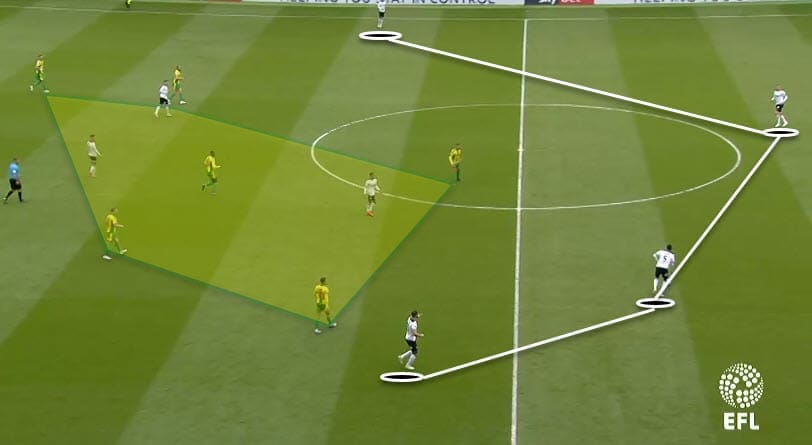
In the above example, we see Derby in possession of the ball with a line of four defenders spread out across the width of the pitch. Even against a team like Norwich, who are in this image in a passive and relatively deep block. There seemed little focus from Derby in playing into spaces centrally. In the 4-3-3 Lampard does play with a single pivot at the base of the midfield although this player tends to be a largely defensive player and not a passer, like Jorginho at Chelsea, as such the focus of the attacks in the first instance tends to be the wide areas.
By progressing the ball in the first instance into the wide areas Derby all but bypass the single pivot and rely on the two more advanced midfield players and the wide forwards to create space in the final third to allow the ball to be moved up the pitch. This tends to lead, however, to the two wide forwards sitting in narrow spaces and congesting the space that would be open.
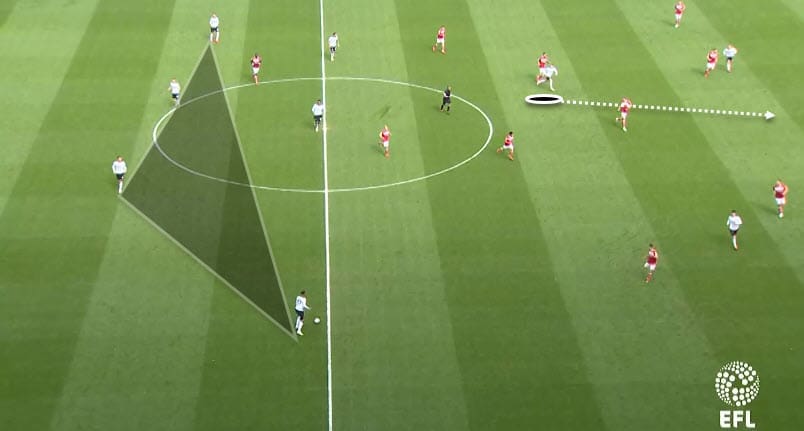
You can see again in the above example that the ball is with one of the back four and despite having space in which to advance the player in possession remains passive. With the two wide forwards for Derby preferring to drop into more narrow positions, either in the half-space or the central corridor, the width then has to be provided by the two fullbacks.
Look at the position of the ball above, then look at the position of the left-back on the opposite side. In order to fully stretch the width of the field, the left-back should have advanced at least 20 yards higher up the field. The right-back, in possession of the ball, should also look to move to a higher line. Instead, there seemed to be an unwillingness from Derby to progress the ball with any urgency. This was a common theme throughout the season.
The more advanced midfielders do make vertical runs in order to occupy advanced pockets of space but these runs are not necessarily easily accessed by a single pass. Ideally, this space would be found by passing to a more advanced player in the first instance who could then play the ball into the running midfielder.
Narrow forward Line
There is of course nothing at all wrong with sides who have their two wide forwards, in a 4-3-3, drop narrow in possession of the ball. Often we will see sides do this in order to occupy the half spaces and have their dangerous forward players play in pockets of space in the final third. We can expect to see the Chelsea wide forwards move into these areas often when Lampard is in charge.
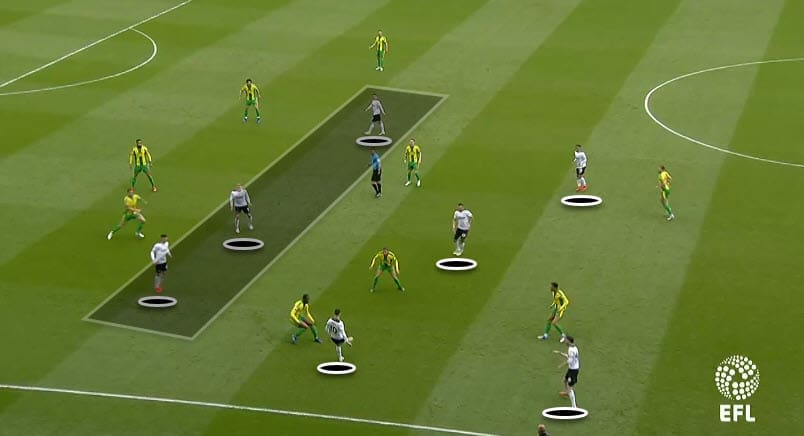
We see in this example that the front three are extremely narrow as Derby look to access the final third. Even behind the front line, however, we see Derby taking up compact positions. These small spaces between teammates allow the ball to be cycled quickly and safely and mean that should the opposition win the ball back Derby can counter-press in order to win back the ball quickly.
It also means though that should Derby look to switch the ball out to the other side then they do not have the players in position to allow this pass to be made. This also has an effect on the defensive structure of the opposition. If Derby had a player out on the far side of the pitch then the opposition would have to account for this and therefore the defensive structure would be stretched. This, in turn, would create the space that Derby would be able to play through.
Shooting from range
Another reoccurring aspect of attacking play from Derby County was the willingness and apparent freedom that their attacking players had to shoot from significant range. In general terms, a high level of shot volume tends to be a positive thing. Only, however, when this volume is combined with intelligent shot locations. These tend to come from areas that yield a high value of expected goals per shot.
Last season we saw Derby under Lampard build up an extremely high shot volume but from locations that had a low chance of resulting in a goal.
Let’s take two players as a case in point. Over the course of last season, we saw the Welsh international Tom Lawrence play 3,912 minutes and score 10 goals from an expected goals value of 5.92. This shows that Lawrence overperformed his expected goals by 4.08. When we look at his shot map for the season the reason for this become clear.
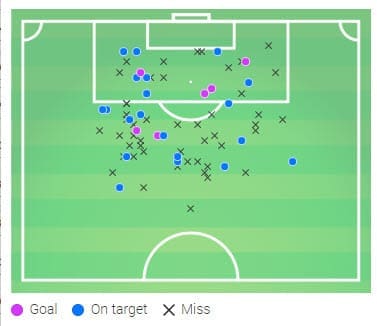
Positionally we see that Lawrence shot from almost anywhere across the width of the penalty area. This is not surprising given that we have already seen that the front three for Derby remained relatively narrow. Time after time, however, possession in dangerous areas was wasted for Derby as their attacking players tried to shoot from range.
The same can be said of the young Welsh winger Harry Wilson who spent the season on loan from Liverpool and operated from the right of the attack. Wilson ended the full season with 4,921 minutes played and an extremely impressive 21 goals from 12.43xG. He, therefore, outperformed his xG by 8.57. Once again we see why in his shot chart.
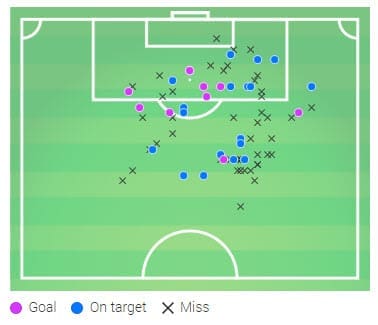
Wilson was more likely to stay on the right-hand side although once again we see that he was willing to shoot from significant range.
It would be interesting to see what could be achieved through Lampard’s tactical system if the English coach encouraged his forward players to be more selective in their shooting. Working the ball into more advanced positions would increase the chances of scoring and be far more efficient!
The defensive structure
If the attacking structure that we saw from Derby under Lampard was inefficient then the same could not be said of the defensive structure. The 4-3-3 system very quickly becomes a 4-5-1 when Derby were out of possession with the two advanced midfielders dropping back to the same line as the deeper midfielder in order to deny the opposition space in the central areas.
Under Lampard Derby did not press aggressively although Wyscout lists their passes per defensive action (PPDA) as a league average 8.41. This means that as an average Derby allowed their opponents to make 8.41 passes before pressing them and triggering a defensive action.
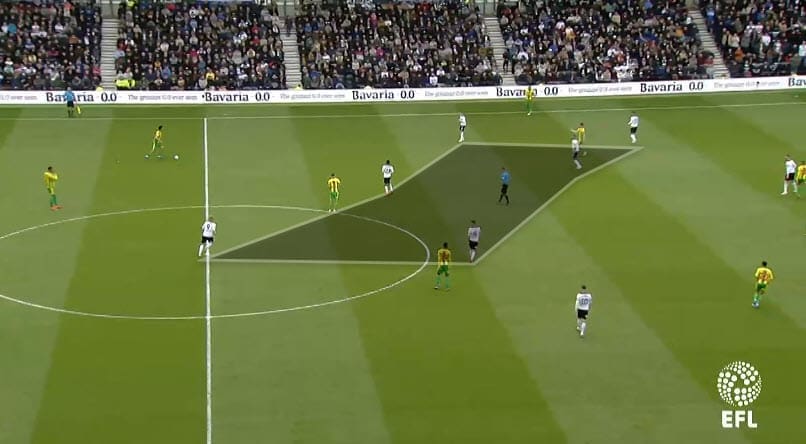
When out of possession in the first instance Derby would look to prevent their opponents from accessing central areas of the pitch. This meant that structures, as we see above, were relatively common with the positioning of the defensive players effectively funnelling the opposition down the wide area.
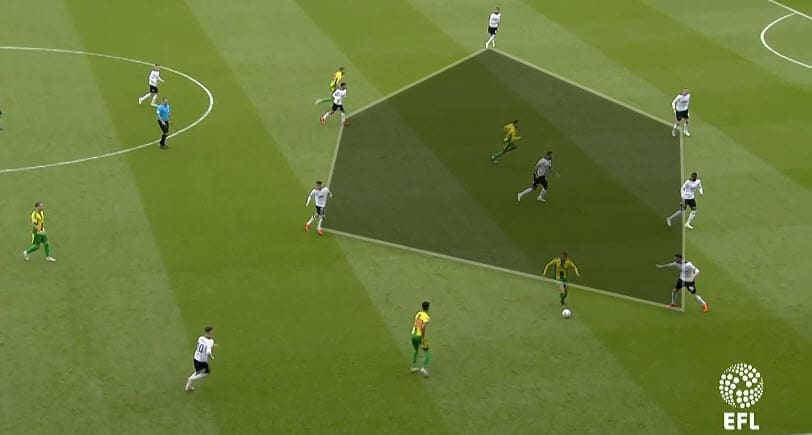
We see a similar situation here as the opposition are threatening to break through in the final third. The defensive block for Derby remains relatively compact and the opposition are almost encouraged to attack down the wide areas.
The Chelsea squad
This is obviously a difficult time for Chelsea in terms of recruitment. They are under a transfer ban and although there is still an appeal ongoing it is uncertain whether that will be resolved in time for them to make any signings this summer. Combine that with the fact that, as mentioned before, recruitment over recent seasons has been geared towards different tactical structures and we see a squad with issues.
In a 4-3-3 I would expect to see Chelsea line up under Lampard like this;
GK: Kepa
RB: Azpilicueta
CB: Rüdiger
CB: Christiensen
LB: Alonso
DM: Kanté
CM: Loftus-Cheek
CM: Kovacić
AMR: Pulisić
AML: Willian
ST: Abraham
Kovacic’s loan has been made permanent by Chelsea a few day ago. The main talking point will be the move of the French midfielder N’Golo Kante back to his position at the base of the midfield. I would also expect to see the likes of Mason Mount, Reece James and Callum Hudson-Odoi given a significant increase in first-team minutes.
It is possible that the recruitment of Lampard as the coach will provide the cultural change at Chelsea to allow them to play more young players from their excellent academy.
Conclusion
It is difficult in these circumstances to draw direct comparisons from what we will see a coach do from one club to the next with regards to tactics. Frank Lampard is an intelligent and well-spoken man who understands football having played at the highest level. He has also shown a willingness to learn as a coach and took steps on his appointment at Derby to surround himself with excellent coaches.
His status with Chelsea fans should buy him the time to acclimatise to the top flight and working with better players will give him a chance to be more expansive in his tactical approach to matches.
If nothing else the appointment of Lampard will make the Premier League a more interesting place next season.
If you love tactical analysis, then you’ll love the digital magazines from totalfootballanalysis.com – a guaranteed 100+ pages of pure tactical analysis covering topics from the Premier League, Serie A, La Liga, Bundesliga and many, many more. Buy your copy of the June issue for just ₤4.99 here, or even better sign up for a ₤50 annual membership (12 monthly issues plus the annual review) right here.

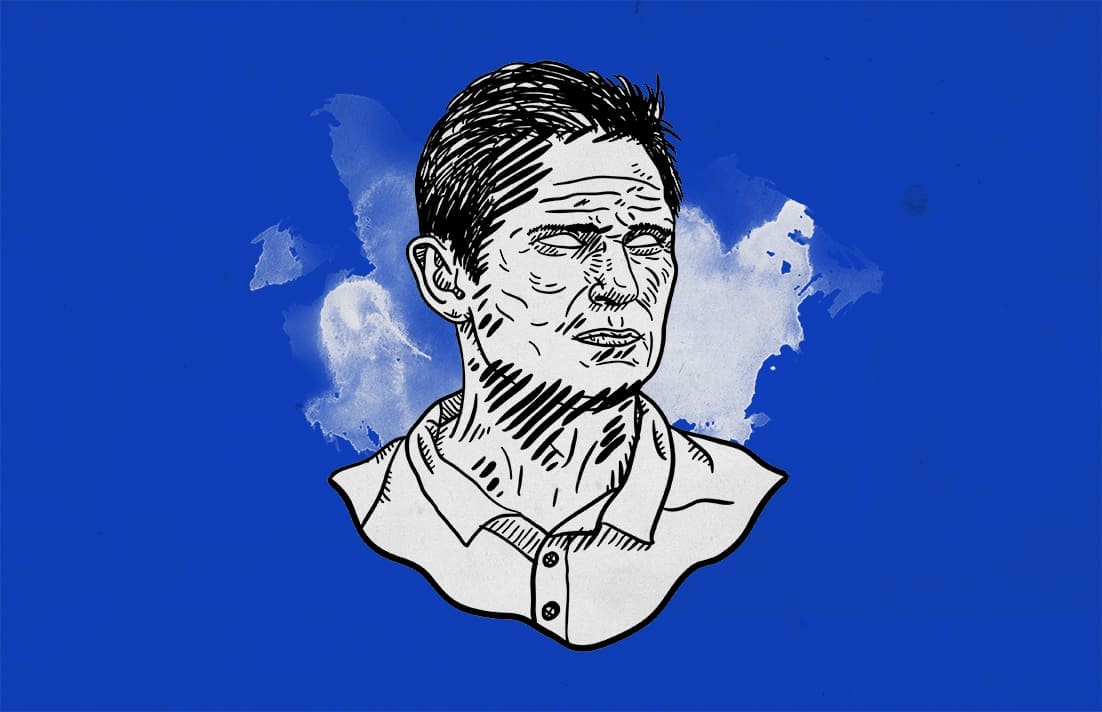




Comments